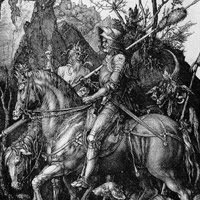While many enjoy the sword from an aesthetic viewpoint, some take it a step further and engage in martial practice.
Putting aside the elements of self-defence and physical fitness, a common thread runs through all martial arts – rather than just being something to pass the time, they can be pursued as a way of furthering ourselves mentally and emotionally, and can even become a focus to enhance our spirituality.
So, why do people choose the Historical European Martial Arts, or even more specifically, medieval swordsmanship?
The pull of the sword – an innate interest in edged weaponry may lead us to view the sword as a potent symbol or elegant weapon.
The pull of the times – we may have an interest in medieval history, re-enactment, or the myths of old, where the sword often features strongly.
The pull of the unknown – we might view the reconstruction of these arts as a great puzzle, enjoying the research and study, and recreating a part of our collective history.
We can appreciate the appeal of historical swordsmanship from a romantic perspective, but we must always remember to respect the sword. In its time it was an efficient, versatile and deadly tool, and that is no less true today, even when we are employing blunts or wasters.
The exact reason why anyone chooses this as a martial pursuit will likely involve more than one specific motive, but its position as a practical and historically based method for employing the longsword will continue to arouse interest for generations to come.







